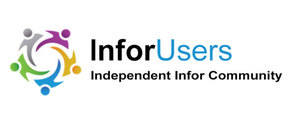The Problem: The Pandemic Drives Nursing Shortages and Adds to Burnout
The nursing shortage was enhanced by the pandemic catalyst. In New York City, hospital nurses were shuttled from service environments that suffered lower patient volumes due to COVID-19 concerns to frontline COVID-19 service areas. This led to a 25% increase in anxiety and a 17% increase in depression. Younger nurses who did not have the level of mastery of more experienced nurses were more impacted.
Another study of the impact of the pandemic on nurses believes the long-term psychological impact on nurses will outweigh the economic impacts due to the risk of depressive symptoms and post-traumatic stress if healthcare organizations don’t start planning for mental health support and assistance for their nurses.
Provider organizations should begin to also assess the activities and tasks performed by nurses to determine how menial tasks can be reduced or eliminated so nurses can focus on their key objective, which is delivering high-quality care that drives expected patient outcomes. One solution that is quickly emerging to reduce menial tasks is the introduction of nursing-assistant robots.
At this time, robots that provide nursing assistance have been proven in several pioneering healthcare organizations. Providers should be creating prototype projects to test robots for their ability to improve nursing satisfaction.
The Solution: Robots Can Help Reduce Tasks Unrelated to Direct Patient Care
Cedars-Sinai hospital in California has rolled out Moxi robots to assist nurses by performing tasks such as delivering lab samples and collecting medicine from the pharmacy. Cedars-Sinai believes that the robots have saved the nurses 300 miles of walking since the start of the project in September 2021. The time and effort saved in walking for nurses to perform their tasks aren’t the only outcomes of the robots; the use of robots is also likely to enable more focused patient care time by the nurses, and that should result in improved patient care outcomes and patient safety.
There is the potential for nursing robots to also assist with improving the efficiency of telemedicine and telehealth services. Nursing robots can be used as an effective interface between doctors and patients whereby the robots have onboard display screens for the virtual video encounter. Robots can navigate between patient rooms where specialists can be used to conduct telemedicine services as needed by the hospital. The same nursing robots will likely be able to also collect key patient vital signs using remote patient monitoring solutions.
Key considerations for using robots to support nurses are the following: they are available 24/7 to assist nurses (if you keep them charged); they help protect nurses, staff, and patients from exposure to highly contagious viruses and bacteria; and they will not unionize. Robots that assist nurses will continue to evolve as countries such as Japan have come to rely on this technology to support their older citizens.
The Justification: Nursing Health is Worth the Investment
The U.S. is expected to experience a nursing shortage through 2030. Several studies report that the nursing shortage will approach 1.2 million nursing positions by 2030. According to a 2021 LinkedIn report, registered nurses are the fifth most sought hire.
The nurse shortage is complicating healthcare delivery in the U.S. and adding to the nursing burnout problem. Both issues are also putting patient care and patient safety at risk. Robots that assist nurses in performing menial tasks, such as delivering lab samples for testing, collecting medications requested by nurses, and delivering meal trays, will help improve nursing satisfaction by allowing nurses to focus on patient care. Nurses are dedicated professionals who relish in improving their mastery of patient care services.
The Players: Companies Evaluating the Market and Those with Robots in Action
Several large companies are testing the robot nursing-assistant market due to the projected spend of approximately $1.5 billion dollars by 2025 with a CAGR of 21.5%. Large companies are represented by RIKEN-SRK, SoftBank Robotics, Panasonic, Fraunhofer IPA, Aethon, PARO Robots U.S., Inc., Hstar Technologies, Toyota Motor Corporation. Companies with robots being actively used in healthcare include the following:
Success Factors:
- Provider organizations should evaluate a nurse-assistant robot within their innovation centers or labs relative to functions and tasks that are most likely to improve nursing-care efficiency.
- If the nursing-assistant project shows promise, a key nursing service area should be selected for implementing the robots.
- Before implementing the robot services to support the nurses, well-designed training and education programs need to be developed and designed with biomedical engineers to support nurses with in-class, at-the-elbow, and virtual sessions.
Summary:
Robotic technology that incorporates sophisticated AI capabilities for navigation, communication, and socialization capabilities will emerge to become a necessary technology to support short staffs of nursing and to help reduce nursing burnout. Countries such as Japan are deploying robots in care-delivery environments as they do not have an ever-increasing elderly population that is far outpacing younger generations of nursing personnel. This same generational model will also impact the U.S. as baby boomers become a larger segment of the population and fewer younger generations enter the nursing field. Adding nursing schools may not resolve this situation in the U.S.
The market for robotics vendors to create robots to conduct many low-skill healthcare tasks creates a large and growing market opportunity that will be entered into by many global technology companies. Robotic capabilities will continue to improve where some healthcare jobs are eliminated. Much like how the automobile industry incorporated robots into the assembly line, we are seeing similar things with robot surgery. Providers should be begin incorporating robots into their healthcare workflows.
Photo Credit: Vadim, Adobe Stock


